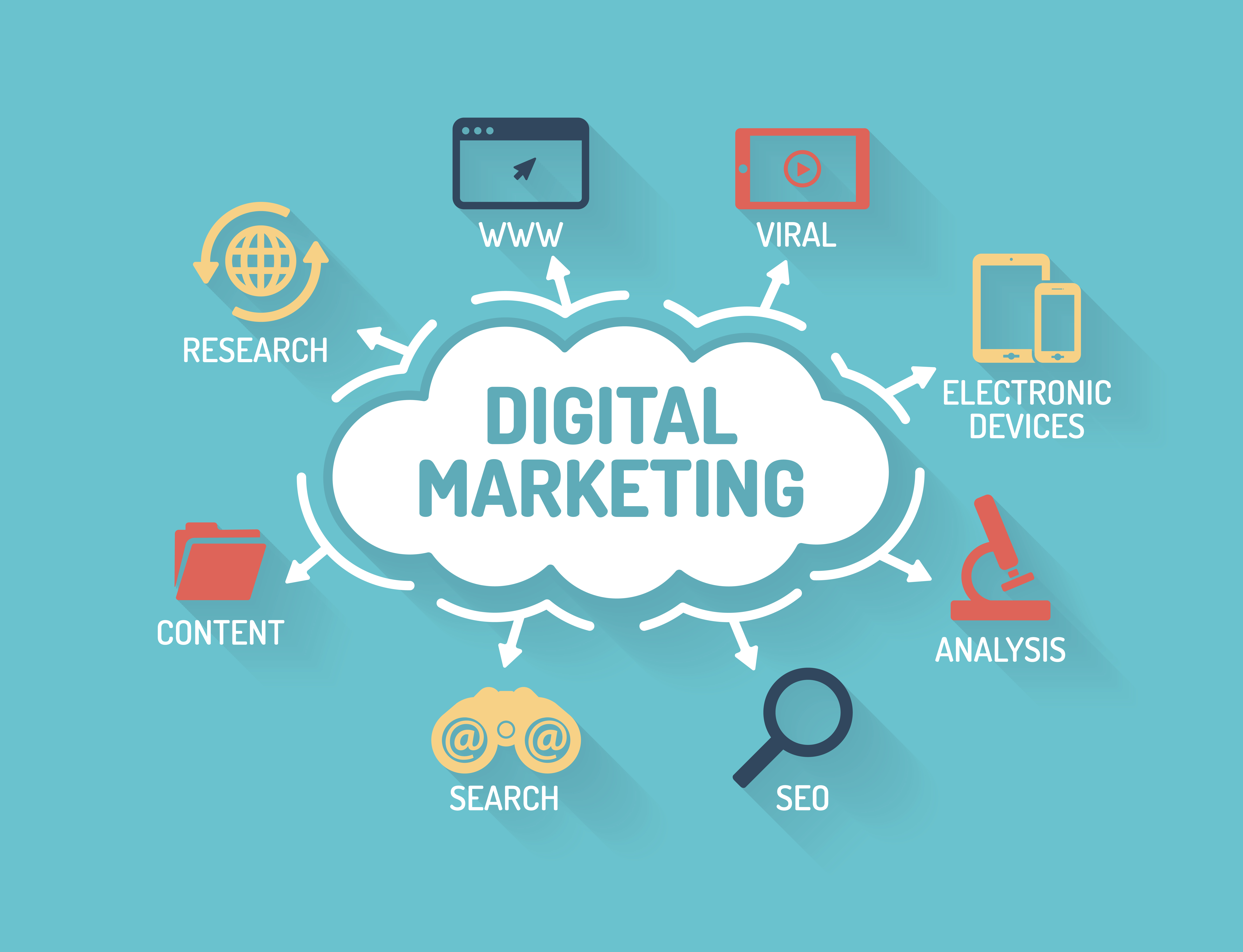Category: Business
Businesses in the present are making every move to ensure that they stay ahead of their competitors in the market. A rapid growth in terms of market share, revenues and customer base is desired by every business unit. One of the strategies being used by the businesses to ensure faster growth is the development and deployment of the enterprise mobility applications.
Enterprise Mobility is the trend that allows the employees of a business organization to work remotely to fulfill the business tasks and activities using mobile devices, mobile applications, and cloud-based solutions. An enterprise mobility application refers to a mobile app that is developed to target the enterprise-related problems.
Enterprise mobile applications can enhance business growth for companies in the following ways:
- Better Work-Life Balance
Every employee engaged with an organization aspires to maintain a healthy balance between the professional and personal commitments. Enterprise Mobility Applications allow the employees to experience better flexibility by allowing them to carry out business tasks from any of the remote location. 69% of the IT decision-makers support the idea of BYOD as they have witnessed positive results with the inclusion of the same. Workers in the United States on an average save 81 minutes per week with the aid of BYOD. There are 49% employees that say that they are more productive while working on their personal devices.
- Improved Workflow
Critical issues may crop up in a business environment anytime, without prior notices or hints. Enterprise mobile applications allow the employees to resolve such issues on an urgent basis irrespective of their presence and availability at the office location. Real-time interactions are also made possible with the clients that result in better customer engagement and satisfaction. The overall workflow, therefore, improves with the use of such applications.
- Reduction in Costs
Enterprise mobile apps can be made compatible and accessible on the personal devices of the staff members. It leads to the reduction in the cost of the devices and the share may be used in other significant business requirements.
- System Independence
There is a higher level of system independence provided to the employees with the use of enterprise mobility applications. It leads to the execution of the tasks from any network and the tools are installed in the devices of the employees.
- Reduced Paperwork
More paperwork leads to increase the number of risks in the business, such as loss of documents, replication of data and inefficiency in the storage and management of the documents. With the use of enterprise mobility applications, there are electronic documents that are used for sharing and transactions. These are easier to maintain and can also be processed at a faster pace as compared to the paper-based documents. The overall business speed, therefore, gets enhanced as a result.
- Customer Engagement
With the improvement of the workflow of a business and the non-stop availability of the employees, the customers feel connected with the organization. There are higher levels of transparency that can be maintained to gain customer trust and satisfaction. Rapid resolution of the defects and issues along with urgent sharing of information are some of the abilities that are made possible through the enterprise mobility applications. It leads to the better engagement with the customers and the reputation of the business organization also improves in the market.
- Empowers the Field Workers
There are several businesses that include a lot many field workers to carry out operational business activities. These field workers may experience certain issues such as difficulty in understanding a task or emergence of a conflict between two resources. Enterprise mobility applications may be used in such scenarios to contact the team heads and managers for maintaining the continuity of the operations. Also, activities such as status reporting and sharing of information can be done in a matter of seconds. All of these capabilities lead to enhancement of the processing speed of the operations resulting in faster business growth.
There are technological innovations and advancements that are being carried out with each passing day. It is required for the business organizations to remain updated with the technological changes and adapt the same to their functioning. The practice will allow the business units to achieve their goals accurately and rapidly. Enterprise mobility applications are a contribution of technology that has benefitted a lot many organizations. However, the inclusion of these applications in the business architecture may vary from one business unit to the other. Factors such as nature of the business, projects that are undertaken by the organization, customer expectations, project team members etc. shall be considered before moving on to the use of enterprise mobility applications.
Stay up to date on what's new

Featured Blogs
Stay up to date on
what's new



Talk To Our Experts
A business can significantly benefit from top-of-the-line IT infrastructure that helps reduce costs and thereby increase revenue. Organizations today find it necessary to have an entire space dedicated to top data centers as opposed to few years before, when, having a few servers on premises was the norm. Enterprises demand a robust IT infrastructure model that delivers operational efficiency, high performance, minimum downtimes and maximum cost reduction.
Advocating for improved DevOps is not easy for growing organization, especially when infrastructure is not a core competency. Let’s consider the case of our client, a manufacturing giant, whose growth is constrained by a weak IT Infrastructure. Here, what should the world’s largest cooler manufacturing company, headquartered in Texas, the United States with over 1200 employees and over 500 different products do, – focus on their business or spend their time and resources on infrastructure and facility management?
The Client
Our client is world’s #1 cooler, drink containers and supporting accessories design and manufacturing company, shipping products to more than 250 retailers worldwide. They wanted to do away with the hassles of managing their IT infrastructure management and needed a right partner to independently manage their systems, data centers, facilities and infrastructure support.
IT Challenges Faced by the Client
In an effort to optimize ownership costs and system performance, the client transformed their IT systems from IBM mainframes to Sun SPARC servers and Oracle software. The client faced several issues after the implementation of Oracle’s Enterprise Business Suite, for which they sought Fingent’s Help.
Their core applications ran on Solaris OS upon Sparc hardware, Oracle Linux on Intel and Microsoft Windows server on Intel. To better support the applications, better synergy was needed between the OS Systems Administration and the Oracle DBAs. The client also had to relocate their data center twice, relocate several terabytes of data, and immediately implement a Disaster Recovery site at their co-location facilities.
How Fingent Helped Igloo Manage Their IT Infrastructure
The client asked Fingent to replace their previous OS Admin team to enhance their IT operations, infrastructure, upgrade technology and systems and minimize outages to have a stable and high-performance environment. We installed the latest Solaris, including Operations Center, allowing Igloo to move away from Zone virtualization to a multi-node database and application servers. With Ops Center, they are now able to move their core EBS application from one Sparc machine to another in real time – without any downtime hindering their business processes. Also, the maintenance patches are applied without any outage.
Fingent offered the following services to the client:
- Desktop Management
- Server Management
- Network Management
- Vendor Coordination and Management
- Data Center Virtualization & Relocation
- 24*7*365 Days Support for Production Environment
Solution & Technology Highlights
- Full-Scale IT planning, installation, & project management
- X86 & Sparc Server Virtualization and management using Oracle VM manager & Oracle Enterprise Manager OpsCenter with Oracle ZFS Storage Appliance resulting improved application and DB performances and increased revenue for the customer.
- Disaster Recovery Datacenter build to a new location
- Introduced Cloud Environment
- 24/7 monitoring, maintenance and supporting of entire Customer Infrastructure.
- Automation of OS deployment for Solaris, Linux and Windows Servers.
- Enabled monitoring of all hardware using Nagios for proactive support.
Business Benefits for the Client- A ROI of approximately 165% over 2 years
We ensured that the client’s IT environment ran efficiently and optimally throughout a year to ensure maximum uptime and minimal costs. Our team constantly worked to solve every challenge that the client faced in a very short span of time, and supported their future expandability and redundancy, within their budgeted cost factors. And as a result, the following benefits and results were incurred:
- 24*7*365 availability of IT infrastructure management
- Consistent increase in productivity and turnaround time
- A return on investment of approximately 165% over 2 years
- World-class infrastructure maintenance, Stable productive environment & guaranteed uptime
- Better control over existing infrastructure
Fingent’s Team was able to build trust and confidence in the client’s infrastructure, by building better speed, efficiency, and manufacturing readiness.
“ Indeed, the ultimate goals was to ensure that we guarantee a degree of quality and service to ensure that the client has no roadblocks in its growth path” says Vincy, Manager, Development and Operation- Infrastructure.
Fingent was an ideal choice for the client as their facilities management partner because of our expertise in providing top-notch IT services across various industries and landscapes. We ensured that the complete responsibility of IT infrastructure management was taken over from the client’s shoulders.
Want to get better ROI from your IT Infrastructure investments? Take a tour here or talk to us today.
Stay up to date on what's new

Featured Blogs
Stay up to date on
what's new



Talk To Our Experts
In today’s digital age, a website is your business’ window to the world, irrespective of whether you are a brick and mortar establishment or an online entity. Similarly, the need for a dedicated website is not just limited to startups but is equally vital for established business. Even if your business is doing exceptionally well, investing in a well-designed and responsive website can help you reach out to a wider cross-section of the audience and increase your sales manifold.
Here is rundown on how custom website development services can turn the tide for your business:
Website Development and Its Advantages
Custom web development is one of the finest things you can do to guarantee the success of your business. In addition to improving your visibility, customized website development can help your business in the following ways:
- Customized website development boosts your credibility and adds a certain brand authority to your business.
- A professional-looking website can bring you big gains without an astronomical investment, thus, offering a higher return on investment (ROI) than traditional means of advertising.
- It does not matter whether you are a newbie or a seasoned market player, there is bound to be competition in your realm of trade. A dedicated website can assist you in leveling playing field and even beating your competitors.
- It boosts your advertising and marketing endeavors across different channels. Your social media marketing and email marketing campaigns are likely to resonate better with your audience if these lead them to a website.
- Custom designed websites are cross-browser well-matched.
- Custom developed websites also costs nearly same as of any template based solution. They may have little higher cost but offer numerous benefits and total control on each part and role of the website.
Specialized, clean, and well-organized online presence is essential for preserving your brand reputation. General designs can create a negative impression of the product or service quality, the reason being customers see you as no dissimilar from thousand other companies. The website represents your business in terms of superiority, quality, and individuality, so you need to have one developed skillfully.
Importance of Multiple-Channel Presence
At a time when smartphones and handheld gadgets rule the roost, the number of people accessing websites through a desktop computer is fast dwindling. Almost everyone likes to browse the internet on the go. Therefore, a website with a responsive design – that ensures your website is displayed correctly and uniformly across platforms, devices and screen sizes – is essential to stay relevant in the dynamic online landscape.
As per statistics, whopping 67 percent users are more likely to use an enlisted service or buy products on a website with a clean, responsive design. In contrast, 61 percent users are likely to exit a website with an unfriendly layout and design. The bottom line is – a potential user may bounce back from your website and move to that of your competitors if you don’t cater to a multiple-channel presence.
How Digital Marketing Can Help
Building a website from scratch is no big deal, given the user-friendly content management systems like WordPress. Even so, if you really want to make an impact with your web presence, it is advisable to use professional custom website development services because you don’t just need to build a carefully-strategized site but also work toward improving your search engine rankings to attract massive traffic. People will know that you exist, only when your website is visible in search engine results. A smart digital marketing campaign can help in bolstering your web presence to clock-in tangible gains.
Stay up to date on what's new

Featured Blogs
Stay up to date on
what's new



Talk To Our Experts
Enterprise software solutions are the backbone of an organization. Selecting one for your organization is a great responsibility as it requires detailed analysis at each and every step. The major challenge lies in understanding that every organization’s structure is different and cannot do with the same software that was used in your previous organization or is used at the competitor’s company. To make your task easy, here are 8 challenges to avoid before purchasing an Enterprise Software.
1. Change Management
One of the key understandings that should come with a new Enterprise Software is that there is a need for identifying the changes in the IT infrastructure beforehand and then implementing it. Know how much change is required and if it is possible to handle before purchasing the new software. Also, the employees need proper training for change management and to get them comfortable with the new system before it goes live on an organizational scale.
2. Physical Requirements
Before jumping into a purchase decision, figure out what is the current IT infrastructure landscape, if it fits well or requires changes. For a newer setup, choose the software wisely and then plan the landscape. But remember, the software you choose defines this landscape and should be thoroughly checked to avoid any unwanted changes in the future.
3. The load of migration
Data is the basis for every industry functioning in this day and age. Introducing newer software to the system means adding your current data to it for validation and future operations. Check the requirements of the new system you plan on incorporating and if the required is way too much. Remember data is imperative to the organization and correct migration will minimize errors.
4. What the vendor has to offer
Sometime Enterprise Software vendors are too enthusiastic to sell the product but lack a structure post-purchase. Figure out what are the key support promises that they offer and if they have a track of delivering them. A due diligence of the provider should not be skipped especially if the vendor is not a big company.
5. Readying the team
Internal challenges are one of the key points to consider for the purchase. You will have to understand the requirements of the enterprise software development company well along with the features required. Each department will offer a different list of features they need. The challenge is to create a project scope that encapsulates all these important points and uses it as a foundation to identify the right software.
6. Software scope
Considering any enterprise software, and its capabilities, it is quite hard to find one that has everything that a business needs. As organizations strive to meet individual customer demands, they rely on customization to align their strategic objectives with enterprise solutions. For instance, one of our leading real estate organizations wanted to add a document management function that enabled them to share documents easily with their field agents. However, this posed numerous regulatory constraints considering security and privacy. Our solutions experts realigned the software architecture and build processes to meet the client’s requirement.
7. Taking unwanted risks
The market has opened up for Enterprise Software like never before and every day a new solution surfaces that promises to offer the best of all worlds. New-age technology can be highly enticing but always look under the hood and see if it has been taken for a test drive. Check LinkedIn, job boards, or other forums to find out more about the seller and the software itself. Don’t elevate your risks by getting attracted to high-end technology or pricing.
8. No detailed analysis
One of the issues that hamper the procurement of the right enterprise software is the lack of understanding of your own system. Run the analysis several times and match it with what the software will provide. Keep in mind to not depend on what the next version update will feature, rely only on what the solution provides today.
9. Cutting the influences
Decision making in organizations sometimes doesn’t necessarily stay with the designated employees. It is directly or indirectly influenced by the owners or other people in important positions. No matter how well they know or what better deal is offered through a reference, ensure that the decision, in the end, comes keeping the organization in mind and not the influences.
10. Exploring all opportunities
Do not hesitate to look at third-party support alternatives as they might offer something similar or better than premium vendor support. Look at the maintenance rates that come with the software as it is something that your organization will incur on a regular basis.
Whether you are trying to set up a new system or replace an old one, an expert perspective can help reduce these risks and challenges.
Stay up to date on what's new

Featured Blogs
Stay up to date on
what's new



Talk To Our Experts
Information Technology (IT) industry is composed of innovations, growth, and a lot many transformations. There are many uncertainties that are associated with the IT industry due to the rapid changes in the technological trends. The preferred skill sets by the employers also change as per the trends and demands of the industry and the IT professionals face the burden of the same. In the coming years technologies, such as cloud computing, mobility, Big Data, Business Intelligence, and networking were on a rise.
The IT industry surpassed $3.4 trillion-mark in 2016 and is set to cross $3.5 trillion milestones by the end of this year. There are three primary components that are associated with this industry viz. hardware, software, and services. These three components make up for 59% of the global total and the rest 41% is covered by the fourth component, that is, telecom services.
The following list covers the most in-demand IT jobs and skills in the coming days:
- Data Analysts: There are massive clusters of information that an organization processes and manages on a daily basis. The role of a Data Analyst includes the identification of relevant patterns and trends from these data sets to assist the organization in strategic planning and decision-making. There are various automated analytical tools that have also been developed for this purpose. With the increase in the need for data and information, the role of a Data Analyst is high on demand. It is expected to grow by another 25% in the next five years.
- Security Analysts: With the increase in the usage of data and information by the organizations, the likelihood of the security threats and attacks have also gone up. It has led to the increase in demand of Security Analysts, Security Administrators, and Data Security Managers. The year has witnessed some gruesome information security attacks, such as WannaCry ransomware attack. The attack had an adverse impact on the computer systems and network in over 150 countries. The need for a highly efficient data security team has become prominent as a result.
- Health IT: The use of IT in the healthcare sector has increased in the recent years. With the growth of remote health monitoring and telehealth tools, the demand for health IT skills has also enhanced. The much in demand roles in this area include Clinical Informaticist, Clinical Systems Analyst and Revenue Cycle Analyst.
- Web Development & Programming: The involvement of web has become an integral part of the business all across the globe. The latest web development and programming skills, such as the use of lightweight programming and responsive web design & development are being looked upon by the employers. Also, the skills of mobile application development have also grown due to the rise in the usage of mobile applications.
- UI/UX Designers: The primary motive of any web application or a service is to attain maximum customer base and higher levels of customer engagement. One of the most significant aspects to achieve the same is a rich and visually appealing User Interface (UI). The customers are attracted towards the applications that offer them higher usability and good user experience. The demand for this role has therefore increased with the increase in the use of web and mobile applications.
- IT Project Management: One of the most significant resources in any of the IT projects is the Project Manager. There is a lot of responsibility that is put on the shoulders of this resource during the project life cycle. It is, therefore, anticipated that the IT project management skills will continue to remain in demand in the years to come.
With the change in technology, there are also some of the skills that are no longer demanded in the IT industry. There was a time when Mainframe computing was considered as a top skill for an IT professional. However, the latest technological advancements have eliminated the demand for the same. The use of manual testing processes has been replaced by the automated testing practices which have kept the skills of manual testing on low priority. With the advent of social media, the requirement of SEO specialists has also diminished.
The face of IT is changing at a rapid pace. It has become necessary for the IT professionals to maintain the pace with the changing nature of IT. They should always look for the mechanisms and methods to enhance their skillsets to maintain their value in the market.
Stay up to date on what's new

Featured Blogs
Stay up to date on
what's new



Talk To Our Experts
A niche business is no longer a term used often these days due to growing competition in every sector. In the world of startups and well-established enterprises, the companies that stand out clearly in front of their customers will only survive and succeed. Smartphones and fast data packs are beneficial to companies in terms of reaching out to their customers via desktop and mobile websites. But having such a front is a norm today and you will have to think of giving a little more to engage them. According to studies, business mobile apps have a higher rate of conversation when compared to desktop or mobile websites. You must be thinking how will a custom mobile application development help boost your business? Here’s how –
1. Better customer relationship
A custom software development offers customers a way to access your services and products directly. Especially, if you are a product-oriented company, you can have your products laid out better over the standard formats of e-retailers. Also, you can send offers, notifications, and even receive feedback from customers in real-time. You can even have a dedicated app team that offers support 24 x 7 and sorts query for customers with in-app emails and chat.
2. Creating and maintaining database
A custom app will give you the opportunity to access existing customer data and acquire new ones. Also, your app will have your own specialized security features that will safeguard your data against potential leaks and threats.
3. Integration with current services
If you are a software provider then a good way to offer more to your clients is by creating a custom app that syncs with your software. There can be reports, updates, and even a way to access information quickly and easily. To further improve client satisfaction, you can even hire a dedicated support team for app management. Such integration will definitely give your software some extra brownie points while marketing it.
4. Generate revenue
Apps are not just a great way to connect with your customers but can also work as a good revenue source for the business. You can charge customers a little extra for app services or an upgrade. Also, you can have in-app advertisements that add income to your kitty whenever your app is accessed by the customers.
5. Increase customer base
An app ensures that a customer is in your space and the only things they can surf around are your products and services. Having a custom app gives you a chance to put your case forward to new customers and even attract them with in-app offers. You can start giving them free trials and additional discounts via app downloads to add to your revenue. A custom app will define your uniqueness as it adds up to a brand identity for your business.
6. Project Management
Apart from seeking and retaining customers, your entire team can benefit from having an app that works for internal purposes only. Custom logins at each hierarchy can give them access to groups, documents, tasks, calendars, and more to run your business smoothly no matter where they are working from. This is beneficial especially if you have several teams working from different locations. Each team can receive updates regarding the project. Also, it helps in sending critical issues to all the personnel quickly.
Building a custom mobile app for your business is vital in this day and age of competition. Once you are clear about what you want, it’s a good idea to approach companies such as ours that build custom apps from the ground up.
Stay up to date on what's new

Featured Blogs
Stay up to date on
what's new



Talk To Our Experts
There is no information that is not available on the internet today. Digitally, the world has grown into one big continent. Digital presence has become vital for every business, small or large. The times that you only depend on an offline marketing campaign or connection is gone. Today, more than 80 % of users go online and search for things. Even if they zero in on a product, they still will research the product or the brand online. In such a situation, a business that doesn’t have a strong presence online will suffer. Business growth can be directly related to promotions, public relations, advertising, and sales. Let us see how getting a digital presence will boost your business –
1. Provide information
A business with a decent website offering all necessary information that users seek is a good start. Even if you run an offline business, customers will seek online information to know about you even before walking into your office.
2. Get more customers
The digital world is a great place to find potential customers who might be interested in what you are selling. Social Media is a good place to begin campaigns that are not necessarily direct marketing. Spread the word with hashtags and keywords. Your current customers will share your posts and turn into indirect marketers as well. These platforms provide a boost to your visibility and provide the right traffic your business requires.
3. Be visible
When your business has been tuned with Search Engine Optimization (SEO) elements, you will start getting more and more traction. The right type of optimization will ensure that you end up as a top search whenever a customer is looking for a relevant product or service that you are offering. Also, it helps you get an edge over other competitions, both offline and online since your name will come to the front and grab more eyeballs.
4. Market your business
Advertising your business is the sole way to boost your sales and nothing works as good as digital marketing in this day and age. Apart from having a presence on social media websites, targeted marketing campaigns on these sites will spread awareness about your products and services team with great offers to attract customers.
5. Improve Services
Digital presence of your business provides you with an opportunity to directly interact with your customers. Listen to their grievances, feedbacks, and even offer a solution for their problems. This feedback pattern can help you decide on improving your products or services. Companies can consider some of these points as a part of their marketing strategies to bounce back or to adopt what way to go forward. Such a medium works perfectly well for your business as well as your customers. To increase visibility and drive new business, companies create custom business solutions to advertise online.
6. Global Presence
If your business is local and has an aspiration to go global, the digital world is the right place to put your foot forward. It helps in not just connecting with people worldwide but also getting yourself known to everyone. You can add posts on social media websites regarding your services and add a survey to know if they would like these products or services in their locality. It’s a great way to know the potential of a market even before you actually start the ground activity. Businesses that are looking for investments can also leverage on this very presence as one of their key strengths.
A great way to add a digital presence to your business is seeking the help of an experienced digital partner who can provide you with all the necessary tools to get you started and then skyrocket your business ahead.
Stay up to date on what's new

Featured Blogs
Stay up to date on
what's new



Talk To Our Experts
Big Data refers to a term that describes huge clusters of information that may be structured, non-structured or semi-structured in nature. These varied data sets having high velocity and volumes are processed using the Big Data tools for data analysis. The analytics on these sets reveal significant patterns and trends that prove to be extremely beneficial for the business organizations. There are many innovative and interesting ways in which business organizations implement and use Big Data.
Some of these ways and methods are as listed and described below.
- Prediction of Customer Choices & Preferences
It is important for all the business organizations to understand the customer needs and requirements. Big Data is a mechanism that is being used by the companies to understand the customer behavior and demands using the process of data analytics. There is a lot of customer data and information that is available on the web via the social media channels, company websites, and several other platforms. These datasets are gathered by the organizations and are analyzed using the Big Data tools for understanding user choices, patterns, and preferences.
- Strategy and Decision-Making
Big Data provides cost-effective mechanisms to study the customer-oriented data patterns and trends. The results that are achieved using such processes allow the organizations to form the strategies and organizational decisions as per the customer needs. Such practices provide the organization with a competitive advantage over the similar organizations. Also, the level of customer satisfaction also goes up as their demands and requirements are met.
- Establishment of Data-Driven Culture
With the transformation in the technological practices and digital advancements, the business practices and organizational activities have also witnessed a major shift. The present era is the data-driven era wherein the organizations are required to form their business decisions on the basis of the data that is associated with it. Big Data tools and techniques allow the organizations to form a data-driven culture. The culture enables the organization to enhance the level of customer and employee satisfaction by analyzing their needs and demands.
- Identification of the Required Skill-Set
Human resources are the most significant resources that are associated with any of the business organization. The success or failure of the organizational activities is largely dependent upon the knowledge, experience, and skills of its employees. Big Data tools are being used by the Human Resource (HR) department in its recruitment processes. These tools are applied to understand the skill-sets that are necessary for the projects being executed in the organization and the talent identification is done as per the results achieved.
- Newer Methods of Generating Revenue
Data is the most important asset for the organizations. There is a lot of data that the organizations deal with on a daily basis. This data is being used by the big and small companies to create innovative methods for generation of revenue for the organizations. For instance, some of the datasets are available for the customers for free of cost. However, customers are required to pay for certain data sets. In such a way, the revenue earned by the organization on such data sets increases. Similar value-added services are being created by the companies with the usage of Big Data tools.
- Customer Segmentation
The products and services that are provided by the companies to its customers vary on the basis of the customer type. It is necessary for the companies to form the marketing and advertising strategy on the basis of the customer group for enhancement of the customer base. Big Data tools allow the companies to segregate the customers on the basis of different groups such as age, gender, purchasing power, preferences, the preferred mode of purchase and likewise. The offerings by the company are designed targeting each of these groups that lead to increasing the customer base.
- Fraud Detection
There has been an immense increase in the cloud-based services and solutions that are being offered to the customers by the companies. With the increase in such services, there has been an increase in the cyber-crimes as well. Big Data allows detection and prevention of frauds by using historical data to reveal the common patterns that are used by the malevolent entities.
Technology has allowed the business organizations to make progress by adopting latest advancements and innovative solutions. Big Data is one such contribution of technology that has brought several transformations in the business tasks and activities. These tools are being used by the organizations to improve their brand image and gain a competitive edge in the market.
Stay up to date on what's new

Featured Blogs
Stay up to date on
what's new



Talk To Our Experts
Mobility is in a boom phase now, with more number of people accessing the internet using mobile devices as opposed to desktops and laptops. While rolling out responsive websites, where the design of the website gel with the screen size of the app has been a time-tested way to cater to mobile users, of late more and more businesses are forsaking their website and launching mobile apps instead.
Mobile Apps are Always Available
Unlike a website that must be accessed through a browser every time and requires an internet connection to load, a mobile app, once installed, remains in the device, and the user can access it anytime with just a click. The performance of the website depends on the strength of the internet connection, whereas an app may be accessed fast even without an internet connection. Many features and functionality of the apps are accessible offline, with the app updating itself in the background automatically whenever the user goes online. Mobile websites which use caching function to load websites without an internet connection offer very limited functions.
Also, since the mobile app is downloaded to the smartphone, users are more likely to open the app than taking the trouble of searching and entering a competitor’s web page. The presence of an app on the device has a strong influence on retaining the brand name and image on the user’s mind. Mobile app icons double up as ad-banners, and users are reminded of the brand associated with the app even when they do not use the app.
Apps are Technically Superior and Give a Better UX
Web designing has come a long way ever since the days of working with tables and flash, yet with all the technological advancements in web designing, mobile websites still are almost wholly dependent on browsers for even the most elementary functions. For instance, without the browser’s address bar, back button, refresh button, it is virtually impossible to open and navigate a web page.
Mobile Apps are free from such dependencies. Developers have a free hand designing apps with elaborate functions and co-opting advanced gestures such as swipe, drag, pinch, and more, which are far more powerful and enhance the user experience compared to the limited browser options.
Apps are inherently faster as well. Mobile websites depend on javascript code to perform most functions. The framework used by mobile apps run about 5X faster than javascript code!
Browsers have been adapted to the mobile space from desktops, and apps are integral to the mobile devices, and the difference in performance is obvious.
Mobile Apps Offer Scope for Deep Personalization
Users pampered with personalized content are more likely to convert, and apps are deeply personal compared to a website. Mobile apps have the capability to offer highly targeted content and utility, to specific users. Mobile websites, in contrast, reach out to a diverse set of audience and are more of a “one-size-fits-all” thing.
Personalization goes much beyond offering tailored communication to users based on interests, location, and usage behavior, though. Personalization also means making the user experience delightful, based on the profile and preferences of the user. Apps store the preferences and settings made by the user and apply the same automatically whenever the user opens the app. With a website, either the user must log in every time, or state their preferences afresh every time they access the website.
A mobile app also offers the freedom of experimenting with new branding style to users, quite distinctly from the branding style of the browser, which is virtually the same for everybody. While microsites work on a similar design personalization concept of apps, it has not yet caught on.
Apps Leverage the Smartphone’s Capabilities
Mobile devices have become popular not just because of its portability, but also because it packs in many intuitive features, such as camera, GPS, Bluetooth, gyroscope, contact list, accelerometer, compass, and other capabilities, many of which are not found in desktops and laptops or are cumbersome add-ons.
However, such functionality is useless unless there is a viable method to use it during the course of work or activity. Websites, no matter how optimized it is for the mobile, are either outright incapable of leveraging such functionality, or the integration is clumsy. Mobile apps, on the other hand, seamlessly integrate such features to offer added functionality and possibilities for users.
The effective and intuitive use of such features enhances the user experience, reducing the effort users would otherwise have to make. For instance, a banking app could easily allow the user to take a selfie, leveraging the smartphone’s camera, whereas a browser would require the user to painstakingly scan and upload an image. The swipe gesture allows users to browse pages faster compared to using the back or forward button of the browser.
Apps Facilitate Push and In-App Notifications
In today’s hyper-competitive world, marketers have no option but to reach out and engage with their prospects and customers on a proactive way.
The much used and abused email, the default way of online communication, has now lost its effectiveness, with users more likely to send promotional emails straight to the junk folder. Businesses now seek to counter the ever-dropping open rates and click rates through mobile app notifications.
Apps have the capability to generate both push notifications and in-app notifications, offering enterprises viable means to reach out to their users in a less intrusive manner. Users receive push notifications on their smartphones regardless of the activity they indulge in on their mobile devices. In-app notifications come when users open and engage their apps. Such notifications are instant and deliver high click-through rates.
Marketers looking to increase conversions find mobile apps a handy tool to acquire both top-of-the-funnel (ToFu) and bottom-of-the-funnel (BoFu) users and push users down the conversion funnel. For instance, many ToFU users are likely to download intuitive utility apps, and once they download, the marketer can leverage notifications to nurture them into BoFu leads. Likewise, many BoFU users are likely to download eCommerce apps, making them prime candidates for conversion.
Businesses with large wallets may continue with both mobile websites and app, catering to all customers. However, in today’s highly competitive environment with wafer thin margins, most companies would have to prioritize on what satiates their customers the best, and here apps take a clear lead over mobile websites. About 85% of customers prefer mobile apps over websites, about 55% of customers see apps as more convenient compared to mobile websites, 48% of them see apps as faster, and 40% of them find apps easier to browse.
The trick is to deliver highly intuitive and well-designed apps that add value to a user. This requires the expertise of specialists focused on the task and who have horned they skilled developing and implementing several cutting-edge mobility projects.
Stay up to date on what's new

Featured Blogs
Stay up to date on
what's new



Talk To Our Experts
Digital transformation has turned into a ubiquitous concept that businesses can no longer afford to look away. The world is going digital at a lightning speed, making it imperative for business establishments to upgrade their skills, processes and technological know-how to this changing model. The fact that digital transformation emerged as a top concern for CIO Agenda in 2017, according to Wall Street Journal report underlines the imminence of the situation.
Leveraging digital technologies to improve business operations and organizational setups is the focus of businesses right now. If you too are considering a digital transformation initiative for your business, here are five questions to consider for making desired progress in a prioritized and strategic way:
1. Why do you need digital transformation?
‘Just because everyone is doing it’ is not the best reason to undertake a digital transformation process. It is important for an organization to understand why, if at all, they need to go through it. The best approach here is to identify the end goals you want to achieve by going digital – whether it is improving product quality, customer experiences or internal processes – and then work backward. This is particularly important for businesses, where digital processes do not directly tune in with core KPIs. Having your end goals in sight right from the onset will help you determine the outcomes of your digital transformation initiative.
2. How will you substantiate the value of your digital transformation initiative?
Well, this is one of the basic questions that must govern almost every business decision you take but is especially crucial in the case of digital transformation. You must have a clear idea as to how you plan to measure the success of your digitization plan, and for that, knowing how the concept fits into your business strategy is of paramount importance. Once these parameters have been established, the process of monitoring and gauging value of other relevant indicators, not just during the process of digital transformation but also beyond, becomes simpler. This will also save you time, effort and money in layering on technology in areas that don’t really require it.
3. Are your key stakeholders on board?
Digital transformation isn’t a small project but an extensive overhaul that will impact every single department and person associated with your business. As with every other big project, unexpected difficulties may crop up along the way. The project may get delayed or the budget may overshoot. If all your stakeholders aren’t onboard or fully convinced about the need to go digital, they may decide to pull the plug on the project. Working on your buy-in is essential to make sure all leaders and stakeholders – business partners, financiers, and shareholders – fully understand the importance of such an initiative and are committed to taking it to its logical end.
4. Have you found the right people to execute your digital transformation?
Whether you are simply revamping a website, building a new one, working on automated marketing, digitizing customer experiences, or doing it all in one go, you need the right kind of experts to get the job done and done well. Which brings up another poignant question – whether you want to hire people to do this job for you or outsource? The answer to this depends entirely on the kind of digitization you have in mind and the resources available at your disposal. If you are an established business with a long-term digital map in mind, building a core team of digital professionals is better suited. On the other hand, if you are a startup with limited resources, outsourcing may be a more practical option. Whatever your choice, you need to focus on striking that intricate balance between experience, skill and in-demand roles. There are a lot of talented professionals in the marketplace, you just need to pick the ones whose wavelength resonates with your end goals and larger KPIs.
5. Are your employees prepared for the change?
When a business undergoes a digital transformation, a lot of operational aspects are bound to change. This may mean that your employees will need to upgrade their skills and learn new processes. You cannot expect them to throw their existing work habits right out of the window and embrace the change instantaneously. A digital transformation will kick-in in the true sense only when you evolve a strategy to inform, educate and help your employees cope with the change.
Just the way every business has its own distinct identity, each digital transformation initiative is unique too. Be that as it may, these five key questions can prove vital in helping you define and execute a digital transformation that works best for your organization.
Stay up to date on what's new

Featured Blogs
Stay up to date on
what's new
























































































